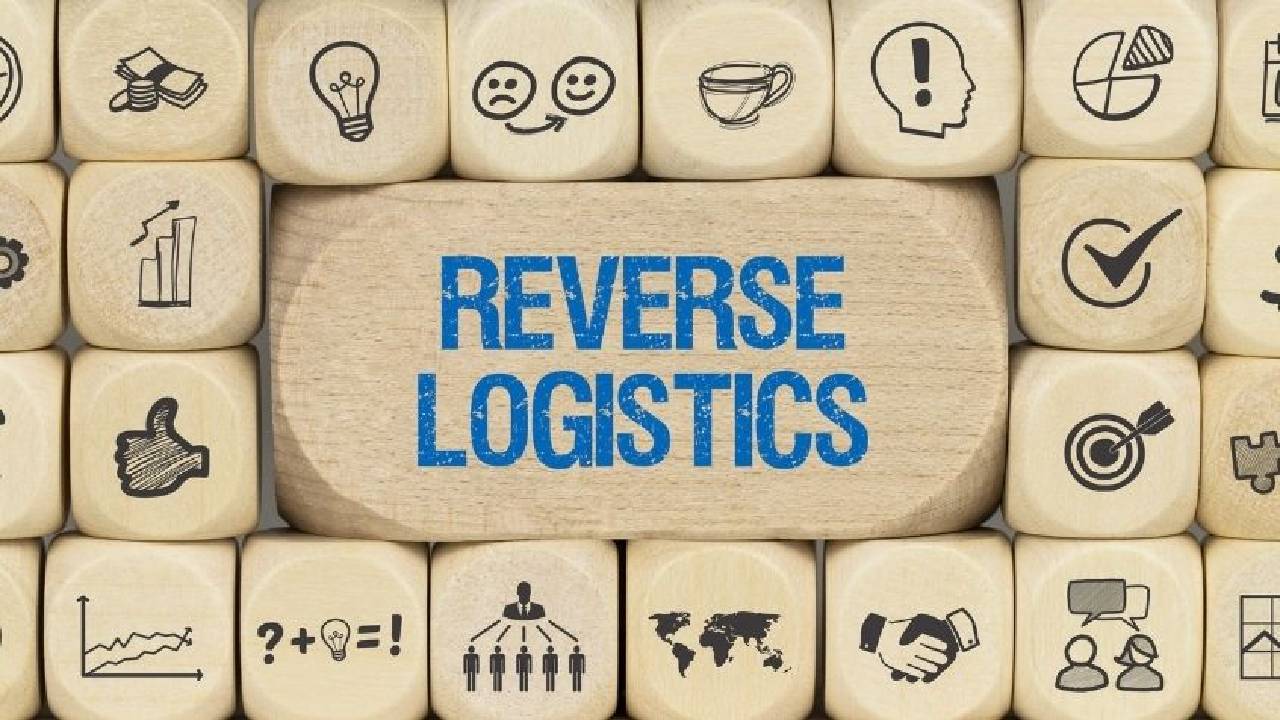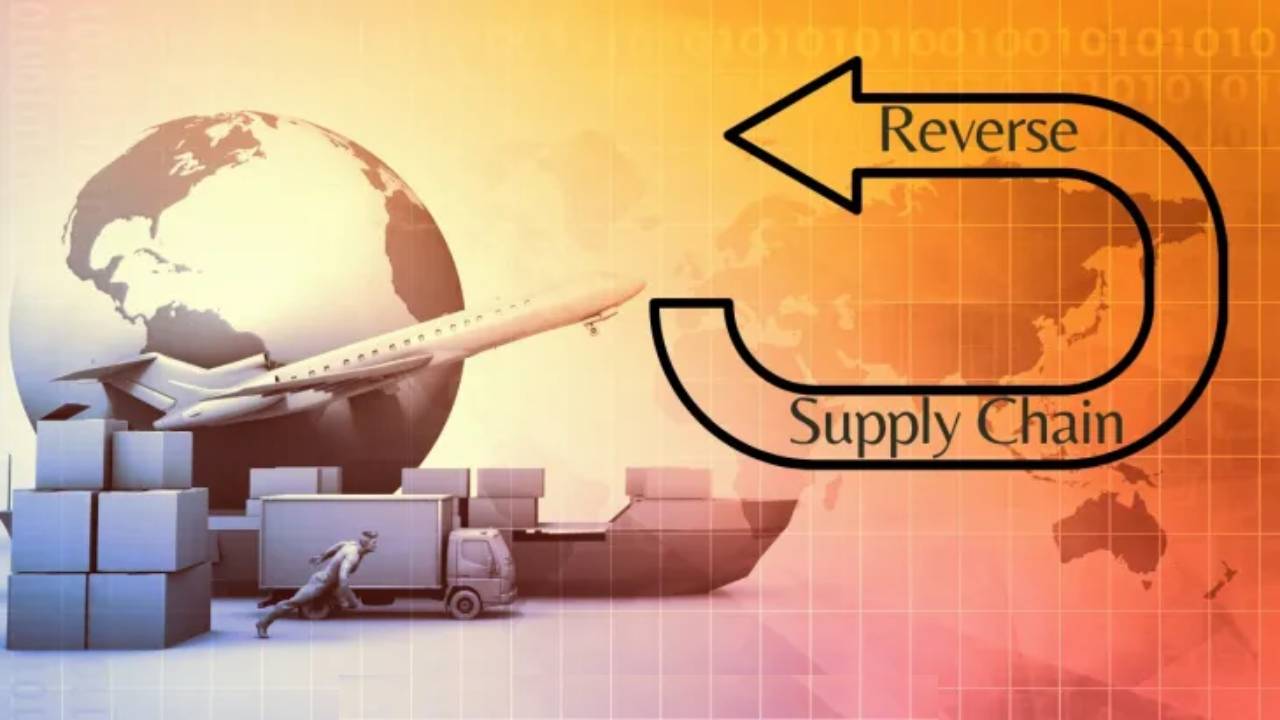Discover the role, importance, challenges, and future trends of reverse logistics in supply chain management. Explore key components, best practices, and technology’s impact.
Reverse logistics, a term that has gained prominence in recent years, encompasses a crucial facet of the supply chain management landscape. In essence, reverse logistics involves the process of managing the flow of products, not from manufacturers to consumers as in traditional logistics, but in the opposite direction – from consumers back to manufacturers. This intricate discipline has garnered significant attention for several compelling reasons.
Reverse logistics aims to manage returns efficiently, refurbish products, recycle materials, and ensure sustainability and cost-effectiveness in post-consumption. Reverse logistics is vital for minimizing environmental impact, cutting operational costs, and boosting customer satisfaction, underscoring its significance.
In this article, we delve into the multifaceted role of reverse logistics, exploring its key components and the profound impact it has on modern supply chains. Navigating the reverse logistics landscape, we’ll demystify its intricacies, prioritizing clarity and accessibility for inquisitive young minds on this journey.
The Fundamentals of Reverse Logistics
Comprehending reverse logistics fundamentals is like exploring a world where products move in reverse, defying traditional commerce flows. At its core, reverse logistics revolves around the art of managing the post-consumption phase of goods. This encompasses a spectrum of activities that facilitate the return, recovery, and recycling of products.
Key Components
Key components of reverse logistics include returns management, remanufacturing, and recycling. Returns management focuses on efficiently handling products returned by customers, assessing their condition, and determining their fate.
Remanufacturing involves refurbishing and restoring returned products to a like-new condition. Recycling ensures that materials and components from returned products are responsibly reused or disposed of to minimize environmental impact. These components are crucial in managing the post-consumption phase of goods effectively.
Returns Management
Returns management stands as the linchpin of reverse logistics. It involves the systematic handling of products that are returned by customers for various reasons. These could range from a defective item to a change of mind.
The process is essential for two primary reasons: customer satisfaction and minimizing losses. When done efficiently, returns management can salvage customer relationships by ensuring a hassle-free return experience. It can also help businesses assess product quality and identify areas for improvement.
Remanufacturing
The art of remanufacturing takes discarded or returned products and breathes new life into them. This process involves disassembling, repairing, and refurbishing products to restore them to a like-new condition.
Remanufacturing isn’t just an earth-capable methodology but also a savvy one. It lessens squandering and can yield significant business investment funds while offering buyers admittance to top-caliber, more reasonable items.
Recycling
Recycling within the realm of reverse logistics is an act of environmental stewardship. It entails the responsible disposal and recycling of components and materials from returned products that cannot be remanufactured.
Reusing decreases the natural impression by redirecting waste from landfills and rationing important assets. It’s a pivotal move toward advancing maintainability and limiting the effect of disposed merchandise on our planet.
The Reverse Supply Chain
The reverse supply chain intricately oversees the return of products from consumers to manufacturers or suppliers, ensuring efficient management. It encompasses various processes, including handling customer returns, managing warranty returns, and dealing with overstock items.
This reverse flow of goods is a critical aspect of supply chain management, where products are evaluated, repaired, refurbished, or recycled to minimize waste and maximize value.
Customer Returns
In the realm of reverse logistics, customer returns are the most common and widely recognized aspect. Customers return products for various reasons, such as defects, incorrect sizing, or simply a change of heart.
The reverse supply chain, in this context, ensures that returned items are efficiently processed, evaluated, and managed. This may involve restocking, refurbishing, or recycling, all with the aim of minimizing waste and maximizing value.
Warranty Returns
Warranty returns involve products that customers return due to defects or malfunctions covered by the manufacturer’s warranty. In the reverse supply chain, assessing returns, diagnosing issues, and repairing or replacing defective items are crucial functions.
Effective warranty returns management upholds quality commitment and drives ongoing product design and manufacturing enhancements for companies.
Overstock Returns
Overstock returns involve products that are no longer needed in a retailer’s inventory due to excess stock or changes in consumer demand. These returns need careful handling to ensure they don’t end up as waste. Efficient reverse logistics processes can help redistribute overstock items to other markets or channels, reducing financial losses and waste.
Reverse logistics basics encompass interconnected processes: returns management, remanufacturing, recycling, and the complexities of the reverse supply chain. This holistic approach aids resource efficiency and aligns with sustainability, making it a vital component of contemporary supply chain management.
The Importance of Reverse Logistics
As we explore reverse logistics, its importance transcends mere product return management, becoming abundantly evident.
Reverse logistics is central to contemporary supply chain management, given its capability to address numerous critical factors effectively. In this part, we’ll dig into the assorted meaning of converse coordinated factors, enlightening its consequences for supportability, cost decrease, consumer loyalty, and lawful consistency.
Environmental Sustainability
When it comes to environmental sustainability, reverse logistics emerges as a beacon of responsible practices. It fosters a circular economy by diverting discarded products from landfills, reducing waste, and conserving resources.
Recycling and remanufacturing, integral components of reverse logistics, help to minimize the environmental footprint of industries.
By promoting responsible disposal and recycling, reverse logistics actively contributes to reducing the strain on our planet’s resources, making it an indispensable ally in the fight for a greener, more sustainable future.
Cost Reduction
One of the most compelling aspects of reverse logistics for businesses is its capacity to drive cost reduction. Efficiently managed returns and refurbished products can be reintroduced into the market at lower costs, providing opportunities for increased profitability.
Additionally, streamlining reverse logistics processes minimizes operational expenses, such as transportation, storage, and disposal costs. Cost-effective reverse logistics practices enable companies to recover value from returned products, ultimately bolstering their bottom line.
Customer Satisfaction
In a world where customer satisfaction is paramount, the role of reverse logistics cannot be underestimated. A smooth and hassle-free return process enhances the overall customer experience, fostering trust and loyalty.
When customers encounter a straightforward, customer-centric return process, they are more likely to become repeat buyers and advocates for a brand. Reverse logistics, by ensuring that returns are handled efficiently and courteously, plays a pivotal role in preserving and enhancing customer satisfaction.
Legal and Regulatory Compliance
Legal and regulatory compliance is an essential facet of modern business operations. Reverse logistics intersects with these requirements by ensuring that businesses adhere to product return and disposal regulations.
Numerous industries contend with rigorous regulations related to managing specific products like electronics or hazardous materials, impacting their disposal. Properly managed reverse logistics systems help companies navigate these complexities, ensuring they remain in full compliance with the law, thereby avoiding potential legal pitfalls and associated penalties.
In summary, the importance of reverse logistics is underscored by its role in environmental sustainability, cost reduction, customer satisfaction, and legal and regulatory compliance. This multifaceted significance establishes it as a key player in the world of modern supply chain management, offering benefits that extend far beyond the realm of product returns.
The Role of Technology in Reverse Logistics
The universe of opposite planned operations has advanced essentially as of late, and at the core of this change lies the powerful mix of innovation. In this section, we will explore the pivotal role that technology plays in the realm of reverse logistics.
From enhancing tracking and traceability to optimizing inventory management and leveraging the power of data analytics, technology has become the driving force behind the efficiency and effectiveness of reverse logistics processes.
Tracking and Traceability
One of the key parts of powerful Converse planned operations is the capacity to track and follow items as they advance back through the production network. Technology, in the form of barcode scanning, RFID (Radio-Frequency Identification), and GPS, has revolutionized this aspect.
These systems provide real-time visibility into the movement of products, enabling companies to precisely locate and monitor returns. Tracking and traceability technology not only enhances operational efficiency but also ensures that products are routed to the most appropriate destination, whether it be refurbishment, recycling, or disposal.
Inventory Management Systems
Efficient management of inventory is a cornerstone of successful reverse logistics. Inventory management systems powered by technology enable companies to monitor returned products, categorize them, and make informed decisions about their future.
This technology aids in the optimization of storage space, reducing the likelihood of overstock or understock scenarios. By seamlessly integrating with supply chain processes, inventory management systems ensure that returned items are handled with precision and in alignment with the company’s objectives.
Data Analytics
In the era of big data, data analytics has emerged as a game-changer in reverse logistics. The ability to analyze vast amounts of data related to returned products, customer feedback, and performance metrics offers invaluable insights.
Data analytics helps businesses identify trends, assess the quality of products, and make informed decisions about process improvement. With data-driven insights, companies can proactively address issues and refine their reverse logistics strategies, ultimately leading to enhanced efficiency and customer satisfaction.
The integration of technology in reverse logistics is nothing short of transformative. From tracking and traceability to inventory management systems and data analytics, technology empowers companies to streamline processes, make data-driven decisions, and ensure that the returns phase of the supply chain is as efficient and effective as possible. This technology-driven approach aligns with the evolving demands of modern commerce, making reverse logistics an essential component of any forward-thinking business strategy.
Challenges in Reverse Logistics
As we navigate the world of reverse logistics, it’s crucial to acknowledge that this intricate discipline is not without its hurdles. The management of products flowing backward through the supply chain brings forth a unique set of challenges that businesses must address.
In this section, we will delve into some of the most pressing challenges in reverse logistics, encompassing product condition assessment, transportation and shipping, and the imperative of processing returns efficiently.
Product Condition Assessment
A central challenge in reverse logistics is the accurate assessment of returned products. Ensuring that these items are in a condition that allows for potential refurbishment or recycling is a complex task. Often, returned products arrive in varying conditions, from barely used to heavily damaged.
Companies must invest in meticulous evaluation processes, leveraging technology and human expertise, to determine the fate of each return. This challenge involves striking a balance between cost-effective refurbishment and responsible disposal, all while upholding quality standards.
Transportation and Shipping
Transporting returned products efficiently and cost-effectively is another hurdle in the realm of reverse logistics. Unlike the straightforward journey from manufacturer to consumer, products returning to the source take a more circuitous route.
The challenge lies in finding the most economical and environmentally friendly transportation options, as well as ensuring that products do not incur further damage during transit.
Companies must design transportation and shipping processes that cater specifically to the needs of reverse logistics, addressing issues such as consolidation and reverse order fulfillment.
Processing Returns Efficiently
Processing returns efficiently is at the heart of successful reverse logistics. This encompasses every stage of the reverse supply chain, from returns initiation to final disposition. The challenge here is to streamline these processes to minimize the time and resources required.
The longer it takes to process returns, the greater the impact on costs and customer satisfaction. Efficiently processing returns involves the seamless coordination of various teams and departments within an organization and, often, the collaboration of external partners.
Addressing issues related to product condition assessment, transportation and shipping, and the efficient processing of returns requires a combination of meticulous planning, technological integration, and an unwavering commitment to quality and sustainability. By acknowledging and tackling these challenges head-on, businesses can unlock the full potential of reverse logistics while minimizing its associated complexities.
Best Practices in Reverse Logistics
In the ever-evolving landscape of reverse logistics, the pursuit of best practices has become paramount for businesses looking to navigate the complexities of product returns and post-consumption processes.
This section takes us through a journey of the most effective strategies and approaches that companies can adopt to harness the full potential of reverse logistics.
From streamlining return processes to the creative art of asset recovery and reuse, and the significance of collaboration with partners, these best practices are essential in ensuring that reverse logistics becomes a value-added element of the supply chain.
Streamlining Return Processes
Efficiency in managing product returns is a cornerstone of best practices in reverse logistics. Streamlining the return process involves creating a well-defined and customer-friendly returns policy. This policy should be easy to understand and straightforward to follow.
Timely communication with customers and providing pre-paid return labels can significantly enhance the return experience. Moreover, by making the return process as hassle-free as possible, companies can improve customer satisfaction, reduce return-related costs, and salvage more returned products for refurbishment or resale.
Asset Recovery and Reuse
One of the most sustainable and economically beneficial best practices in reverse logistics is the art of asset recovery and reuse.
Instead of discarding returned products, businesses can explore opportunities to refurbish, repair, or repurpose them. This approach not only reduces waste but also allows companies to recover a substantial portion of the original product’s value.
By giving returned items a second life, businesses can offer cost-effective options to consumers while minimizing their environmental footprint.
Collaboration with Partners
Collaboration is a golden thread woven through the fabric of best practices in reverse logistics. Partnering with various stakeholders, including suppliers, third-party logistics providers, and recycling facilities, is pivotal. Such collaborations can streamline processes, enhance the expertise available, and provide access to innovative solutions.
By joining forces with partners, companies can tap into a wider array of resources and knowledge, ultimately strengthening their reverse logistics operations.
Reverse logistics best practices encompass customer-friendly returns, asset recovery, and partnership collaboration, ensuring efficient, sustainable, and cost-effective management.
These practices enhance efficiency and cut costs while promoting a sustainable and responsible approach to handling returned products effectively. Embracing these best practices positions businesses to unlock the full potential of reverse logistics, turning it into a source of value and competitive advantage within the supply chain.
Future Trends in Reverse Logistics
As we step into the future, the landscape of reverse logistics is poised for remarkable transformation. Businesses are increasingly recognizing the pivotal role that effective reverse logistics plays in achieving sustainability, maintaining competitiveness, and aligning with the evolving demands of consumers.
This section explores the emerging trends that are shaping the future of reverse logistics, from a steadfast commitment to sustainable practices to the evolving dynamics of e-commerce and the integration of circular economy initiatives.
Sustainable Practices
The future of reverse logistics is inextricably tied to sustainability. Businesses are increasingly adopting environmentally responsible practices in managing product returns. This involves optimizing recycling, remanufacturing, and reusing processes to minimize waste.
Sustainability also extends to eco-friendly packaging, transportation, and the reduction of carbon emissions in reverse logistics operations.
By embedding sustainable practices into their processes, companies are not only reducing their ecological footprint but also responding to consumer expectations for environmentally conscious products and services.
E-commerce and Reverse Logistics
The surge in e-commerce has ushered in new dynamics in the world of reverse logistics. With the growth of online shopping, there’s an increased volume of returns and an expanded set of challenges.
Future trends in reverse logistics are expected to focus on tailoring return processes to meet the unique needs of e-commerce customers. This includes offering convenient return options, managing the complexities of international returns, and addressing issues related to packaging and labeling.
The integration of advanced technology solutions for tracking and handling e-commerce returns will be central to the future landscape.
Circular Economy Initiatives
The circular economy, characterized by minimizing waste and maximizing the use of resources, is gaining prominence in reverse logistics. Companies are exploring ways to integrate circular economy principles into their processes.
This involves designing products for easy disassembly and refurbishment, promoting product longevity, and extending producer responsibility. By embracing circular economy initiatives, businesses can create a more sustainable and cost-effective approach to managing product returns while contributing to a regenerative economy.
The future of reverse logistics is promising, with sustainability, e-commerce adaptation, and the embrace of circular economy principles shaping it. These trends reshape product return management and redefine company approaches to sustainability and enhancing customer satisfaction in the process. Businesses evolving and embracing these trends will be pivotal in reshaping the reverse logistics landscape for a more favorable outcome.
Conclusion
In conclusion, the role of reverse logistics in today’s ever-changing business world is paramount. We’ve explored the multifaceted dimensions of this field, from its fundamental components to its critical importance in driving sustainability, cost reduction, customer satisfaction, and legal compliance.
The integration of technology and best practices further amplifies its significance, transforming it into a value-added asset for businesses.
As we look toward the future, the landscape of reverse logistics promises to be shaped by sustainable practices, the dynamic realm of e-commerce, and the embrace of circular economy initiatives. It’s clear that reverse logistics is not just a function but a strategic imperative, influencing every aspect of modern supply chain management.
As you reflect on this journey, we invite you to share your thoughts and feedback in the comments below. Have you encountered reverse logistics in your business endeavors, and if so, how have these insights resonated with your experiences?
And don’t forget to share this valuable information with your friends, as understanding the role of reverse logistics is not just an essential business consideration but also a fascinating and impactful facet of our interconnected world. Together, we can continue to explore and adapt to the ever-evolving landscape of reverse logistics.










